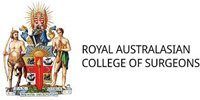Cholecystectomy
The gallbladder is a pear-shaped organ, connected with the common hepatic duct, arising from the liver. The gallbladder stores and concentrates bile, which is produced by the liver and helps in the digestion of fats and certain waste products by releasing the bile into the intestine via the common hepatic duct. Bile is a yellow-green liquid, composed of water, lecithin, cholesterol, bile salts and bilirubin.
Occasionally stones may develop in the gallbladder or duct, due to improper ratio of cholesterol, bile salts, or bilirubin in the bile, and may result in blockage of the normal flow of bile. This presents as severe pain in the upper abdomen. Furthermore, stone formation may produce gallbladder inflammation, a condition known as cholecystitis. Inflammation of the gallbladder without the presence of stone formation is called acalculous cholecystitis, and is often caused from prolonged fasting, severe illness and several other reasons. In rare cases, gallstone formation may result in cancer development in the gallbladder and biliary ducts.
Symptoms
Gallstones may not cause any symptoms but when symptoms appear, they usually are sudden and often referred to as a "gall bladder attack". Typical symptoms include:
- Severe abdominal pain
- Back pain near shoulder blades
- Nausea and vomiting
- Abdominal bloating and belching
- Intestinal colic
- Stomach upsets
Diagnosis
Gallstones and cholecystitis (inflammation of the gallbladder) can be easily diagnosed with ultrasound. Other advanced techniques or tests include endoscopic ultrasonography, cholescintigraphy (HIDA scan) and CT scan.
Treatment:
Gallbladder surgery is considered the best option for gallstones. Most people can live a normal life without their gallbladder, as gallbladder removal results in direct passing of the bile from the liver into the small intestines through the common bile duct.
The surgery to remove the gallbladder is called a cholecystectomy and is usually performed as a laparoscopic technique, which is minimally invasive compared to open abdominal surgery that requires a long incision. In laparoscopic gallbladder surgery, small incisions are made to insert surgical instruments, along with a laparoscope that has a light source with a camera on the end. The laparoscope helps to locate the gallbladder and tiny instruments are used to surgically remove it.
Gallbladder surgery may require an overnight stay in the hospital. The major complication of gallbladder surgery is injury to the bile ducts that can result in leakage of bile inside the body and causing pain and infection.
In cases where gallstones are present within the bile ducts, endoscopic retrograde cholangiopancreatography (ERCP) can be used to clear the bile ducts. An ERCP involves inserting a long, flexible tube, with a light source, called an endoscope that is connected with a viewing monitor. The endoscope reaches the small intestine through the stomach and the affected duct is located by releasing a special dye. The opening of the duct (ampulla) can be cut with tiny instruments located on the endoscope, so that the gallstones can be located and captured in a mesh basket, that is then removed along with the endoscope.
















